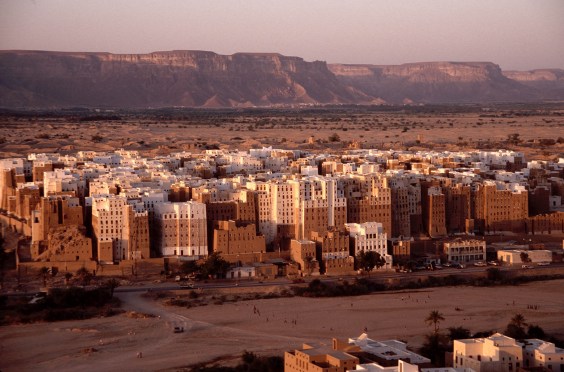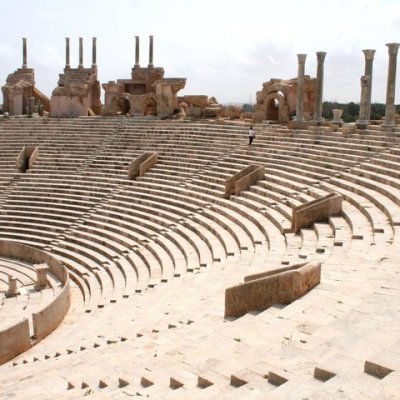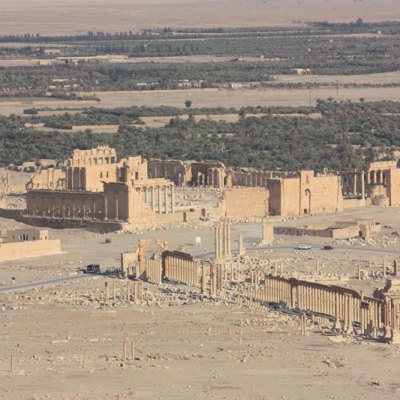Yemen, a country with three UNESCO world heritage sites – the Historic Town of Zabid, the Old City of Sana’a and the Old Walled City of Shibam – and a further 10 on the organisation’s tentative list, has suffered greatly since the outbreak of civil war in February 2015. As well as the large-scale loss of life, important historic sites have been severely damaged, often as collateral damage, but also reportedly intentionally.
Among the four major kingdoms dividing South Arabia (modern-day Yemen) during the first millennium BC was that of the Sabaeans, who grew powerful thanks to their control of overland and maritime trade routes, as well as their trade in frankincense and myrrh. In the 7th century BC, the Sabaeans constructed the Great Dam of Marib – currently on Yemen’s tentative world heritage list – to capture and divert rainwater for the irrigation of fields around Marib, their capital, transforming the desert environment. Reconstructed repeatedly over its 1,000 years of use – first by the Sabaeans themselves and later by their conquerors, the Himyarites – at the dam’s zenith, when its retaining wall stood around 15 metres tall and 500 metres long, it was regarded as one of the greatest constructions of the ancient world. Today, only the dam’s two sluices survive, one of which was damaged by an airstrike in May 2015. At around the same time, the Dhamar Regional Museum – where many ancient Yemeni inscriptions were stored – was also destroyed; thankfully, many of the museum’s ancient inscriptions had already been digitised and so their content, at least, survives.
The high-rise architectures at Shibam, Wadi Hadhramaut (or Hadhramout, Hadramawt) Yemen. Photo: Jialiang Gao/Wikimedia Commons (used under Creative Commons licence [CC. BY 3.0])

After converting to Islam in the 7th century, Yemen became an important centre of Islamic learning and architecture, much of which has survived the centuries in an excellent state of preservation. Sana’a, Yemen’s capital, was already ancient by the arrival of Islam, having been occupied since the time of the Sabaeans – over 2,500 years ago. It is famous for its UNESCO-inscribed Old City, which, quite rarely and significantly, retains much of its original layout from the early phases of Islam. Despite having survived for nearly a millennium, Sana’a’s 103 mosques and over 6,000 houses are now under threat, with a number of traditional tower-houses, constructed from rammed earth and decorated with geometric patterns, already flattened during airstrikes; as these had already been carefully recorded before the war, attempts are now underway to raise money for their restoration. The project Save Yemen’s Heritage is also hoping to send funds and equipment to Sana’a in order to help digitise a vast collection of irreplaceable medieval Islamic manuscripts.
Other sites and cities, similarly famous for their well-preserved historic architecture and layout, virtually unchanged since the early days of Islam, are also at risk. Al Qahira Castle in Taiz, dated to the 10th century and recently restored, was 30 per cent damaged during an airstrike in June 2015 according to UNESCO, while more recently, the city’s museum was engulfed by a fire sparked by heavy shelling by Houthi rebels. The Old City of Sa’adah – founded in the 9th century and on UNESCO’s tentative list – has also seen a number of its historic buildings destroyed. Sa’adah, like Sana’a, is of worldwide cultural importance due to the extensive survival of its medieval architecture – including its city wall and 16 gateways, houses, palaces and mosques – and its importance as an early centre of Islamic learning.
In July 2015, an emergency action plan for the safeguarding of Yemen’s heritage was announced by UNESCO, with the goal of raising awareness, gathering information and providing technical assistance to heritage experts in Yemen. That same month, the Old City of Sana’a and the Old Walled City of Shibam were added to UNESCO’s list of World Heritage in Danger, the latter because of the potential threat it faces in these dangerous times. A ‘no-strike’ list of Yemen’s heritage sites, along with their coordinates, has also been compiled in the hope of stopping future collateral damage. Despite such positive steps, with the civil war still raging and no end in sight, Yemen’s precious cultural heritage remains under constant threat.
Lead image: used under Creative Commons licence (CC BY-SA 2.0)



